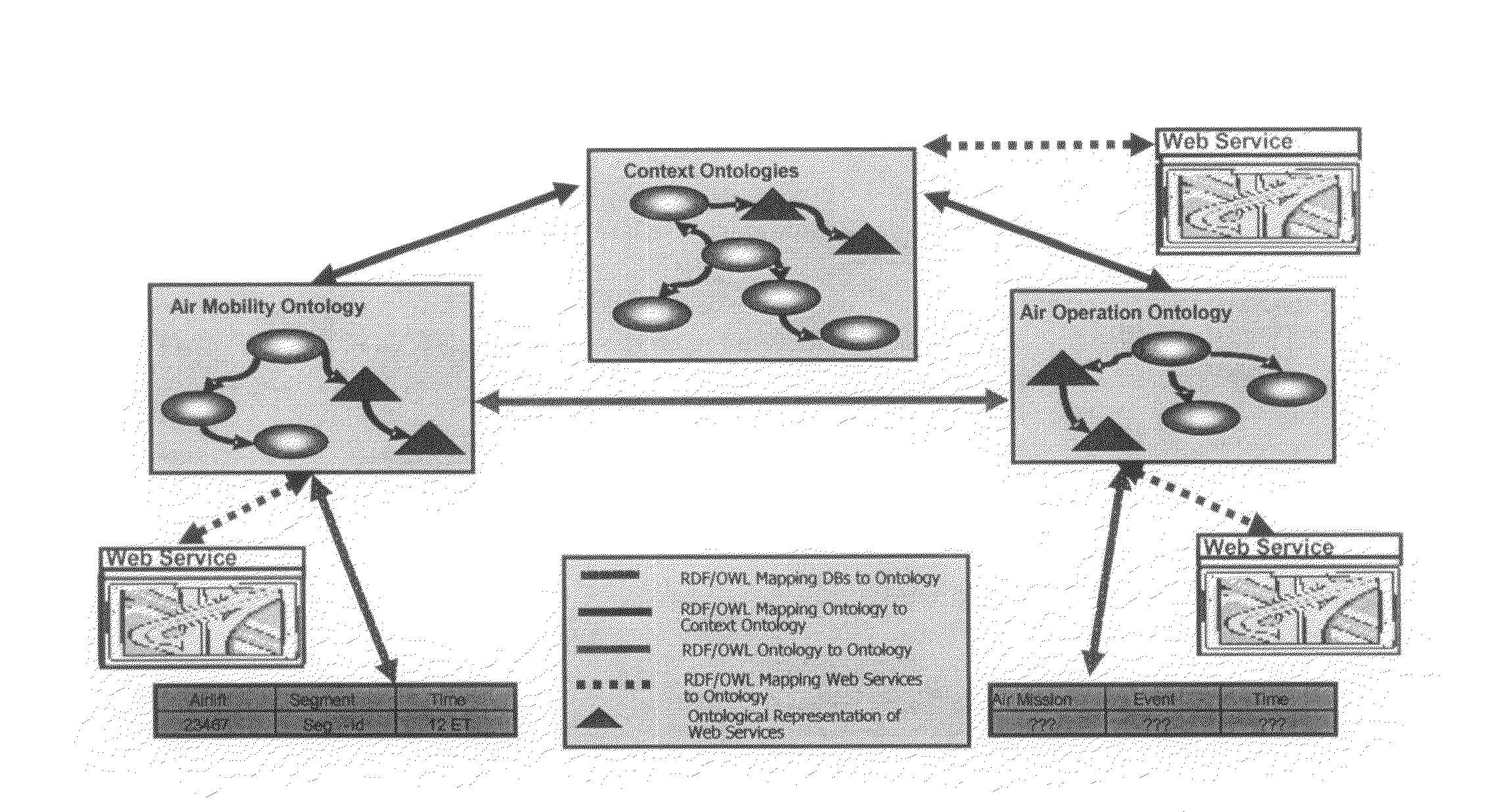Semantic system for integrating software components
a software component and semantic ontology technology, applied in the field of semantic ontology management system for software components, can solve the problems of not being able to provide current xml technologies do not supply the capabilities of more mature technologies like relational database systems, and the technology of web service description files for the purpose of chaining web services is not availabl
- Summary
- Abstract
- Description
- Claims
- Application Information
AI Technical Summary
Benefits of technology
Problems solved by technology
Method used
Image
Examples
example 1
Integrating Databases and / or Web Services into a Searchable Ontological Structure
[0067]The following example shows how an address database and a map-finding web service (e.g., the map services available at MapQuest™ and Yahoo!™) may be integrated according to the invention, by performing the following steps:[0068]Provide a domain ontology[0069]Create and link a database component ontology to the domain ontology[0070]Create and link a web service component ontology to the domain ontology[0071]Broker a user request to suggest executable paths[0072]Manually view the result of implementing one of the executable paths through the augmented ontology or automatically generate a web service to do so
[0073]The domain ontology, D, includes the RDF classes Business, Customer, Name, Location, Street, CityOrTown, State, and PostalZIP. D is represented as a uniform structure of triples, {subject, relationship, object}, as shown in Table 1. This ontology may also be represented graphically, as show...
example 2
Integrating Disparate Information System Ontologies into a Searchable Ontological Structure
[0091]The following example illustrates how two disparate information systems within a given enterprise may be integrated into a service-oriented architecture according to the present invention. The approach builds upon the semantic framework outlined in Example 1 for the integration of databases and web services within a given information system, and the following example extends this framework to facilitate the integration of multiple information systems within an enterprise. An overview of the approach is shown in FIG. 13, and it encompasses the following steps:[0092]Providing a domain ontology for each information system[0093]Providing a context ontology to capture commonly-held concepts and their representations on each information system[0094]Creating and linking a translator web service ontology to the domain ontology[0095]Mapping the individual information system ontologies to the cont...
example 3
Integrating Disparate Web Services or Web Sites Using a Semantic Web Scripting Language (SWSL)
[0143]The following example illustrates a method and a scripting paradigm for automatically integrating disparate information systems (e.g., web services and web sites) within a given enterprise using a service-oriented architecture. The approach builds upon the semantic framework outlined in Examples 1 and 2, in which a new web service enables information exchange between two or more disparate information systems, web services, or databases. The newly-developed web service may be associated with a corresponding new data model, or schema, that serves to harmonize the various data models involved in the information exchange. To facilitate the transfer of information, the basic concepts contained within data models of the disparate information systems, web services, and databases must be migrated and persisted in the new data model. The embodiments below describe how the method and the script...
PUM
 Login to View More
Login to View More Abstract
Description
Claims
Application Information
 Login to View More
Login to View More - R&D
- Intellectual Property
- Life Sciences
- Materials
- Tech Scout
- Unparalleled Data Quality
- Higher Quality Content
- 60% Fewer Hallucinations
Browse by: Latest US Patents, China's latest patents, Technical Efficacy Thesaurus, Application Domain, Technology Topic, Popular Technical Reports.
© 2025 PatSnap. All rights reserved.Legal|Privacy policy|Modern Slavery Act Transparency Statement|Sitemap|About US| Contact US: help@patsnap.com



